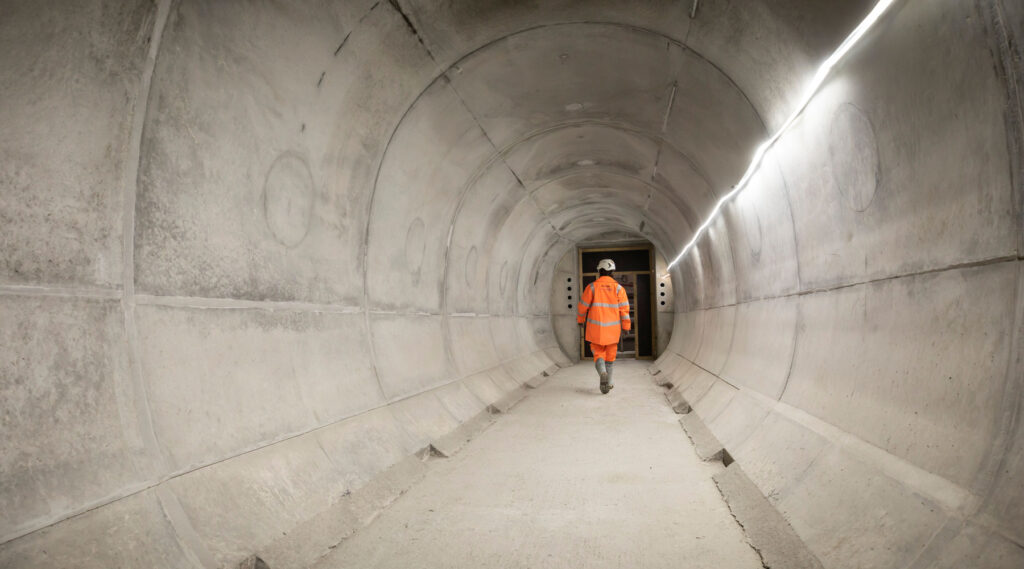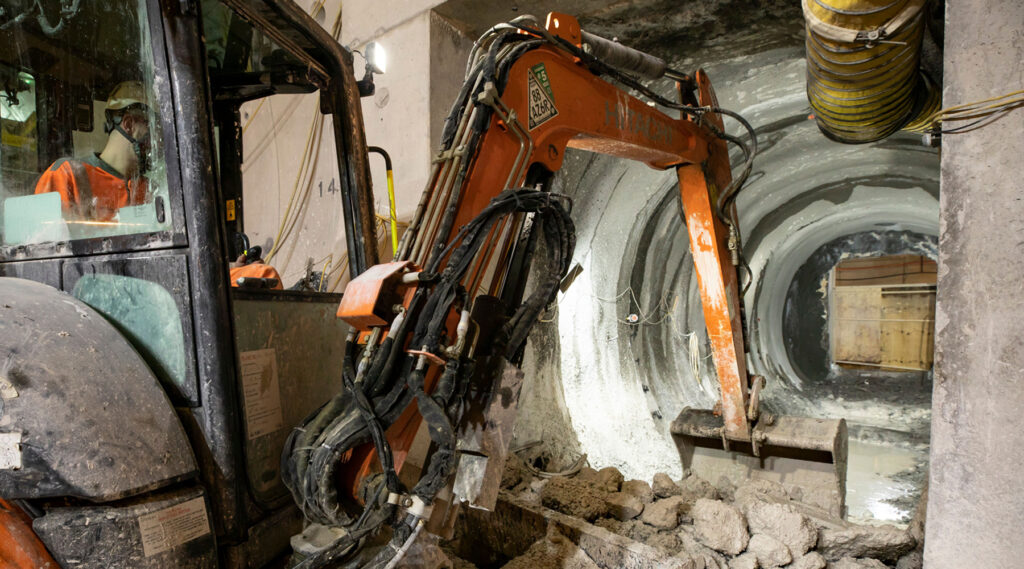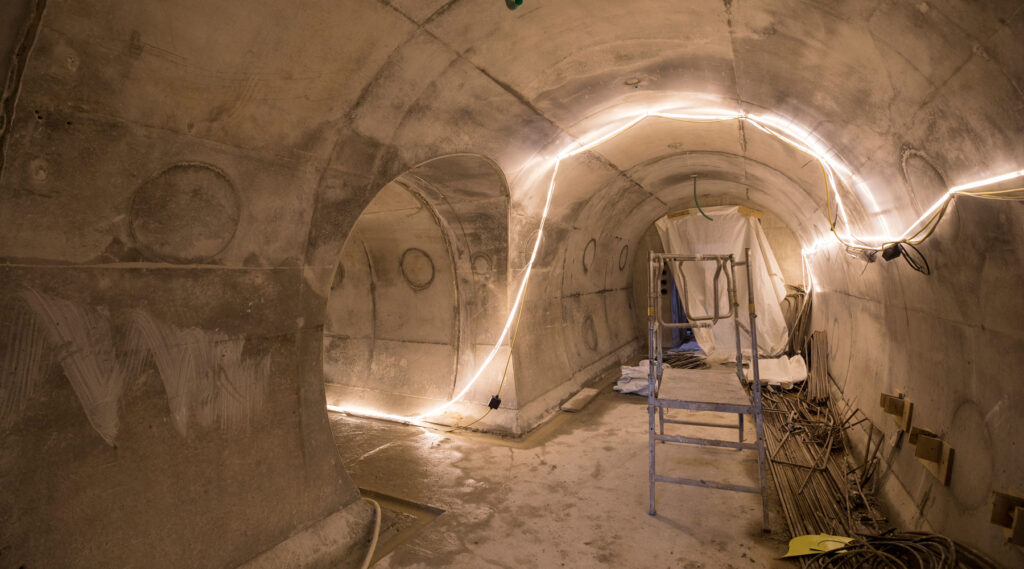Deep under the Chilterns, HS2 has reached the half way mark in tunnelling the nearly 40 side passage tunnels that will link northbound and southbound tunnels.
The 10 mile long tunnels under the Chilterns require regular side passages linking the two tunnels for maintenance and safety to allow people to get away from a train if something goes wrong.
Unlike the main tunnels, which are being excavated by two giant tunnelling machines – named Florence and Cecilia – these smaller cross-passages are dug manually using remotely controlled mini-excavators. A team of miners use the excavators to break out of the southbound running tunnel and dig the 15-20 metres to the adjacent northbound tunnel. As the excavation progresses the ground is supported using a sprayed concrete lining (SCL).
Once the team has completed the SCL lined tunnel, a water-proof membrane is installed, followed by a secondary concrete lining constructed by placing concrete behind formwork installed in the cross passage.
Aaron Harrison, HS2’s Project Manager, said: “While invisible to the travelling public, these hidden passages have a key role in providing a safe operational railway so it’s great to see such good progress.”
The Chiltern tunnel is being delivered by HS2’s main works contractor, Align – a joint venture formed of Bouygues Travaux Publics, Sir Robert McAlpine, and VolkerFitzpatrick – which is also responsible for the nearby Colne Valley Viaduct, which also reached the halfway point last week.
Once the cross-passages are complete, they are temporarily sealed for fire safety reasons before permanent safety doors can be installed at either end. These are being manufactured by Bolton-based Booth Industries who won the contract to provide more than 300 units for all the tunnels between London and Birmingham.
The win allowed Booth Industries to establish a new facility in the town and create up to 50 jobs over the next 10 years. The sliding doors have been subjected to fire and fatigue testing to take account of the high train speeds, associated pressures and frequency of the trains.
Each running tunnel has an emergency walkway that allows passengers to safely evacuate the train and walk through the cross passages into the other tunnel where they can be rescued on a passenger train. Access for emergency services is from either the portal or one of the five ventilation/emergency access shafts. An additional 5 short tunnels known as ‘adits’, that connect the shafts to the running tunnels, are also under construction by the team with the mining on two of the adits already complete.
The two tunnel boring machines are expected to breakthrough at the north portal early next year.










Leave a Reply